An Amazing Barge trip in Southern France
(Can one live a lazier life than this?)
Early September Sandee and I teamed up with Sue and Paul, friends from Denver and the four of us chartered a "four guest only barge" on the Canal du Midi. In absolute sinful luxury we were pampered on the Alegria by a staff of 5: Captain Olivier and his Deckhand David, Riad our personal Chef, Libby our hostess who was always around to satisfy any whim we might have and Marie-Helene our tour guide, who every day that week took us to surrounding places of interest.
I must say although this was for us a once in a lifetime event, one could easily get used to such extravagant living. We learned a lot about the Languedoc area in that week and although from day one we requested Riad to only serve half portions for lunch and dinner, I personally grew 6 lbs that week and I am still working on losing that weight as I am writing this long overdue blog.
The Canal Du Midi meanders from the Mediterranee, where we embarked in a village near the city of Beziers towards the ridge of the Black Mountains (Montagne Noire) and on to Toulouse and the Atlantic Ocean. The story of the Canal, with whom Marie-Helene made us very familiar, is fascinating. About that a bit later. Slowly moving along from lock to lock and looking at vineyards with their rows of vines, readying their grapes for this years harvesting, infrequently lazily lifting an arm to return greetings to passing boating vacationers traveling in the opposite direction, is for a week our daily lifestyle. Had it not been for Marie-Helene, requiring us to leave this sanctuary for daily touring, I might have grown 10 lbs that week.
The other fascinating story of this area is the history of the Cathars, who were brutally eradicated by the Roman Catholic Church during a two generations long officially called for Crusade by Pope Innocent III against the Cathars. This crusade started in the year 1208.
I can't help myself writing a few paragraphs about the Cathars and the brutal slaughter of about a million men women and children all over Europe, of which at least half a million were the Cathars of the Languedoc. All because the movement was too successful in the eyes of the papal clergy. The main threat the Cathars posed to the Pope and his institution was the rejection of priesthood and church buildings, as well as the fact that they read the bible and thus did independent thinking about what they read in the bible.
A movement like this would make the Roman Catholic Church of those days unnecessary. These Cathars regarded men and women equal, they had no doctrinal objection to contraception and euthanasia for example. All this made the Languedoc area, where the majority of the population as well as their rulers created a place of tolerance, liberalism, high culture and art, a safe haven away from the control of Rome. In the first approach the church lost many scholarly debates in the decennia leading up to the crusade, which was embarrassing for the Pope and his Cardinals. Also many priests converted to Catharism.
I expand on all of this because we visited several cities and towns where Cathar history was written. This Pope strangely enough with the name "Innocent" murdered more than 1 million people during his 18 year reign, created the institution of Inquisition, waged war against Satanism, published a papal bull granting church ownership of all wealth and property belonging to people convicted of heresy, and in doing so robbed even kings, queens and princes of Naples, Sicily, Sardinia, almost all of what is now called Spain and Portugal, all of Scandinavia, the kingdom of Hungary, Poland and Serbia, Bosnia and Bulgaria. He also issued papal bulls against independent thought conflicting with church dogma and reading the bible. By papal bull he required Jews to wear distinctive clothing, a document the church dusted off during the Nazi period.
The Dominican order was created during his reign to enforce the Inquisition through court cases. Death for Heresy made the church the rich institution it is today. By the way Death for Heresy remains still today the official position of the Roman Catholic Church, although not really enforced.
Fascinating history at par with sordid parts in the history of Islam and other excesses committed in the name of many religions throughout the world. At this stage let me be explicit in stating to my Roman Catholic readers, that above is mere history of the dark medieval times, from which also wonderful missionary stories evolved in spreading the good gospel throughout the world and that I, as an outsider, applaud the present Pope's efforts to create change within an unwieldy hierarchal empire.
Let's return to the promised second story: the creation of the Canal du Midi. We are living in the times of the reign of Louis XIV, the Sun King, who became king as a 4 year old toddler, mentored/controlled by Chief Minister Cardinal Mazarin, who really ruled the country till he died, when Louis was in his twenties. The coffers of country were empty and the country of 19 million subjects were living in a time of large state deficits and in need of industrialization as farming did not generate adequate national income.
(We ate at Chez Bebelle - the protein orders are thrown to the cook from the walk-in cooler over the heads of the diners)
It was in 1664 that a Pierre Paul Riquet suggested to the Finance Minister Jean-Baptist Colbert a solution for a long desired freight route from the Atlantic to the Mediterrean Sea, thus making it unnecessary to battle pirates and paying fees to the King of Spain, while entering the narrow Strait of Gibraltar on their way to then destinations such as Narbonne and Montpellier.
(Our olive factory visit where the olives are pressed)
This 150 mile/241 km canal allows, with their 65 locks, boats with a maximum length of 98ft/30m and raises them 620ft/189m above sea level. Minister Colbert had no real funds available and needed to be convinced that the project was feasible, as the likes of Emperors Augustus and Charlemagne had desired it before. Even Leonardo da Vinci had taken a stab at the puzzle. The major problem always came down to finding enough water to supply the highest points to be traversed.
(In Olive factory tasting room - have you ever heard of French olive oil? We hadn't)
Mr Riquet was a wealthy salt tax collector for the King who suggested to minister Colbert that creating an artificial lake in the nearby Black Mountains fed by brooks and multiple rivers coming down the mountain slopes and by way of a canal brought to the top level of the canal would feed the locks in both west and east directions. The present and then created Bassin de St Ferreol does exactly that. It contains 6.3 million cubic meter/ 220 million cubic feet of water.
(The Malpas, the one and only tunnel on the canal)
But the most convincing argument Mr Riquet made was that he would co-finance the canal with his own money, provided ownership in perpetuity of the canal was granted him. Riquet died a few months before the official opening of the Canal. He and his family would recoup the investment through lock fees. It took more than a hundred years for the family to recoup their investment. And the revolution that brought in Napoleon ended the family ownership as the state confiscated the canal and rechristened it from the Royal Canal to Canal du Midi.
Another story I need to tell before ending this blog is the story of the trees. After about a hundred year into the existance of the canal the idea was born to plant trees along the canal as another source of income: mulberry trees, because they were the breeding place for silkworms. However about a hundred years later the silk industry came to an end, and the trees were replaced by poplars a fast growing tree that provided wood supply. At the height of this side enterprise there were about 100,000 trees along the canal. After Napoleon it was decided to plant plane trees on the spot of cut trees. There are about 42000 of them, however they are rapidly dying. Ironically a fungus originating from WWII GI munition boxes made from American plane wood dumped in the canal during the war is spreading the fungus from root to root and trees are dying within 5 years of being infected. They are presently being replaced by fungus resistant plane trees brought over from Mississippi. Without the shade of the trees this Unesco heritage site is unbearably hot in the summer and thus threatening the tourist boating industry.
(From the top roof area of the bishops castle in Narbonne)
During this week we ate, drank and lazed in the sun as the landscape floated by. If it wasn't for the guided trips to the cities of Beziers, Narbonne and Carcasonne, a tour of the regions cooperative olive factory, seeing the nine (locks of Fonseranes, the Malpas tunnel (the first tunnel built for a canal in the world), a village market place, and a visit to the village of Minerve where in 1210 the whole village was murdered after a siege by the crusade army of Simon de Montfort it would have not been worth writing about.
Next blog is describing what we did in the week following the barge trip.

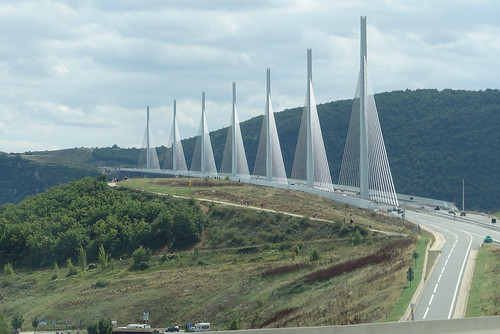
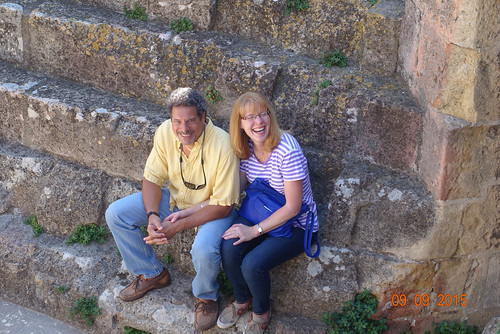
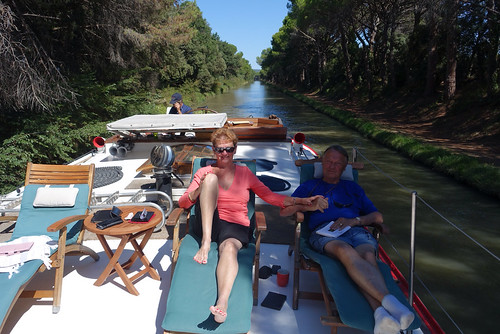
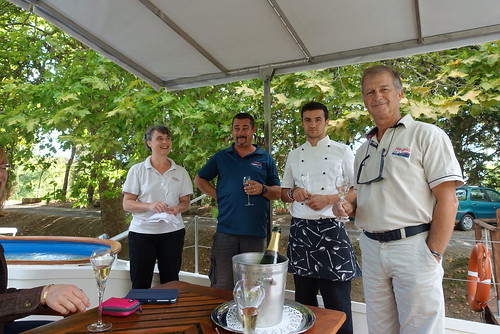
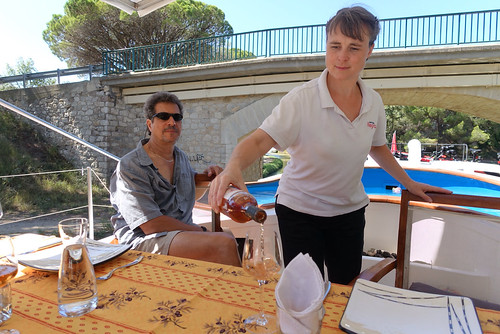
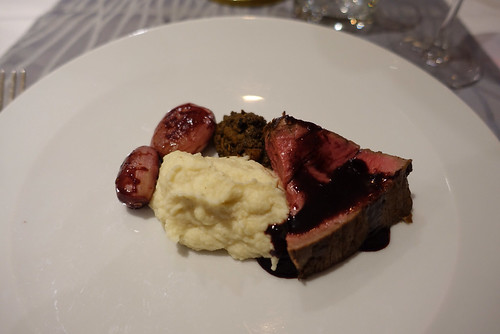
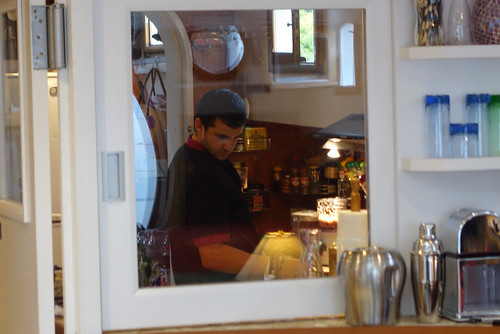
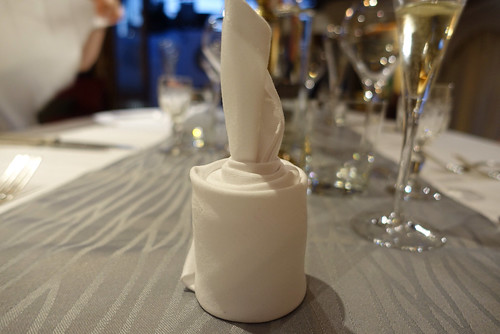
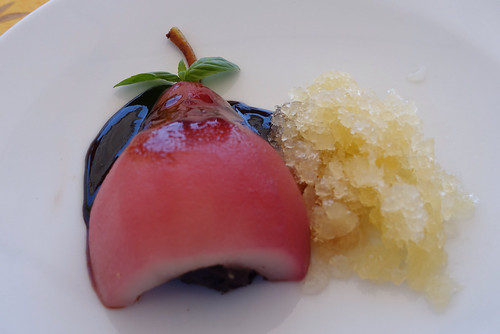

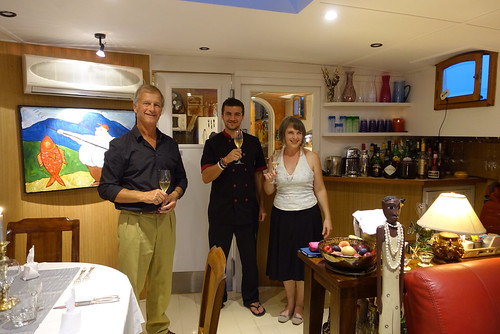
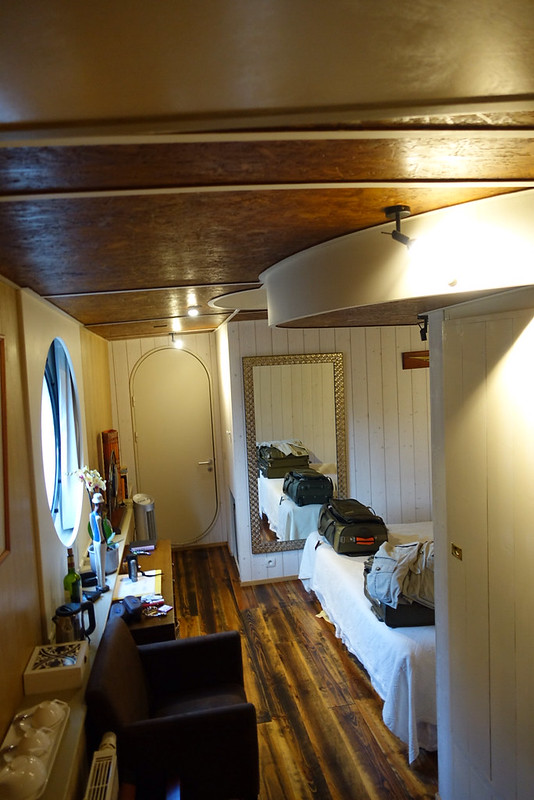


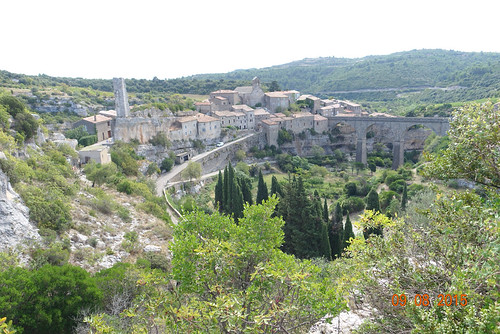

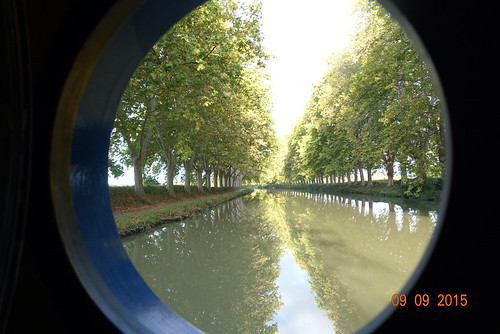
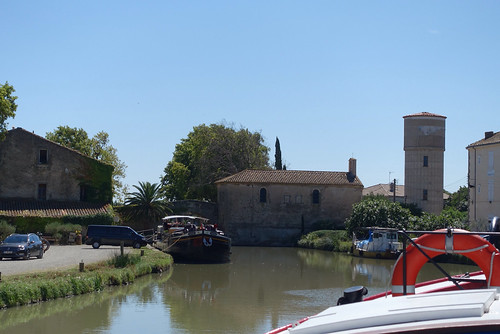
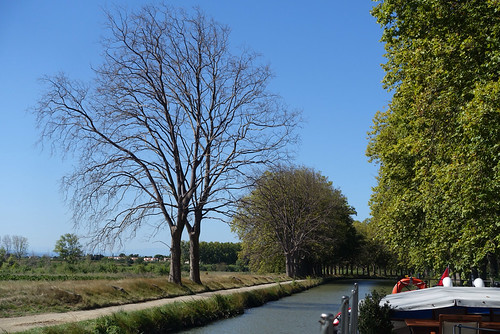
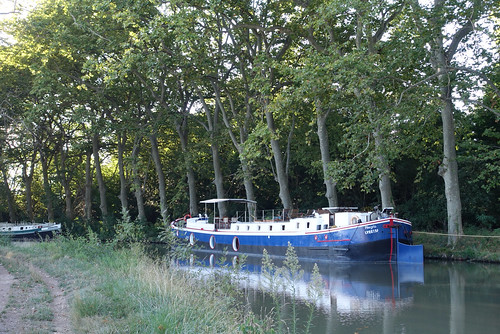
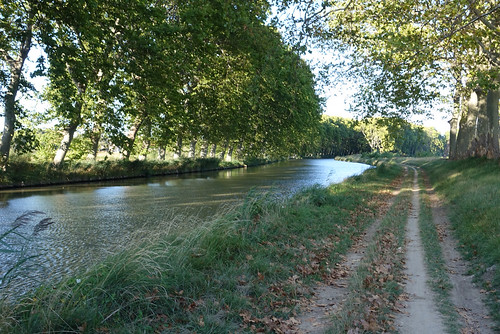
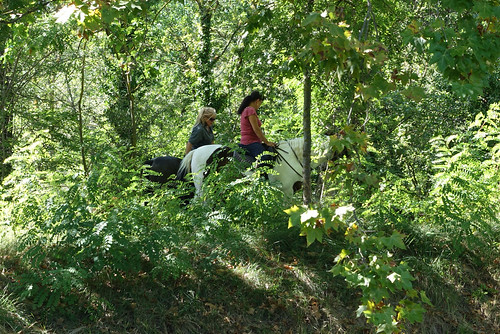
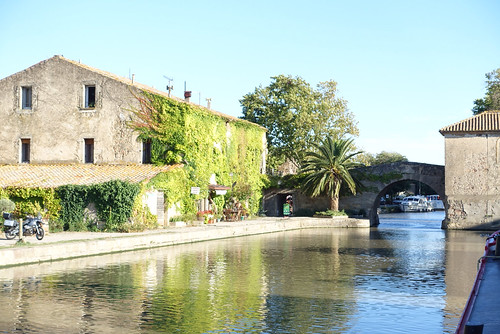
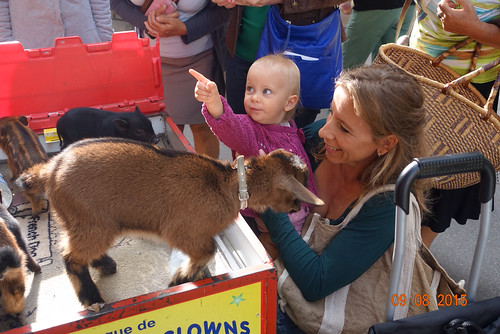
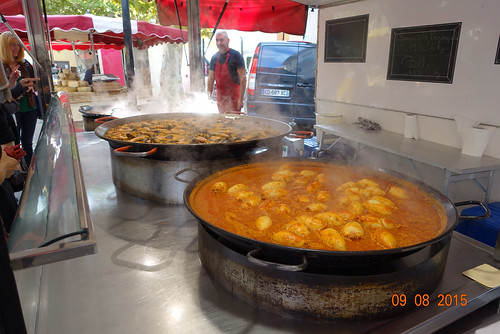
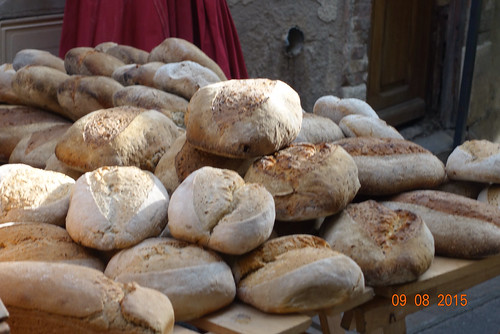
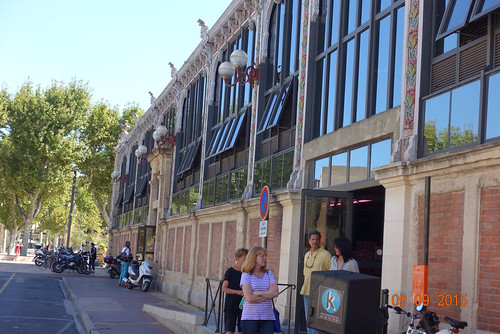
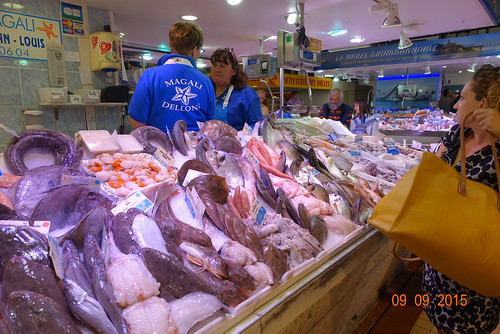
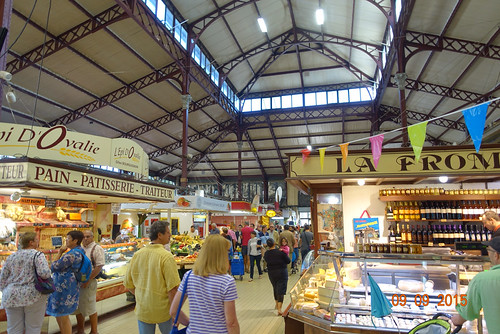
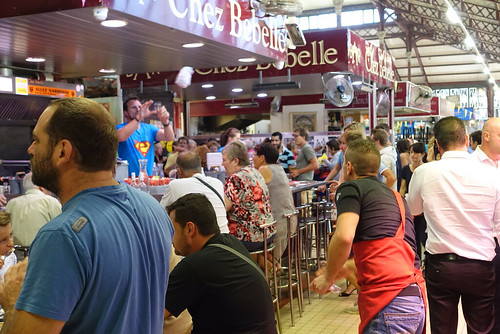


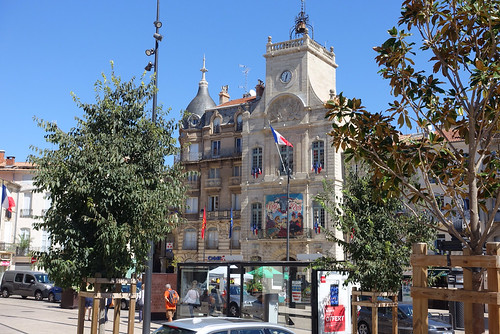
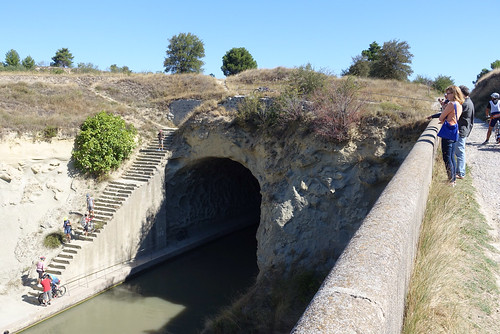

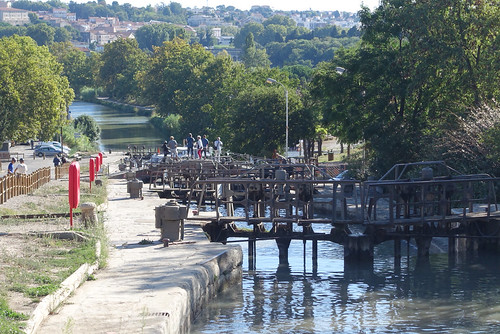
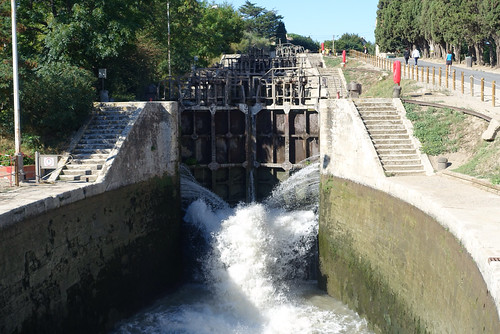
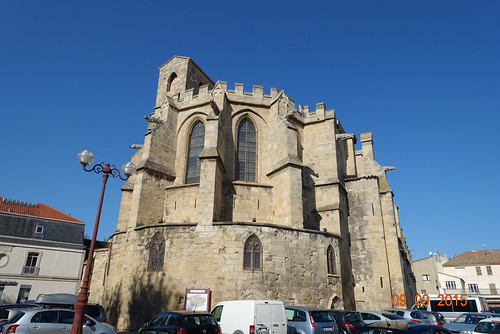


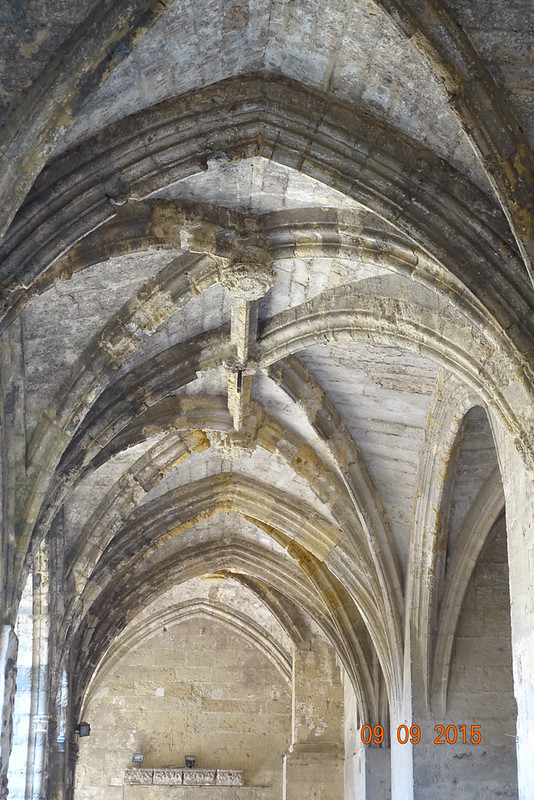

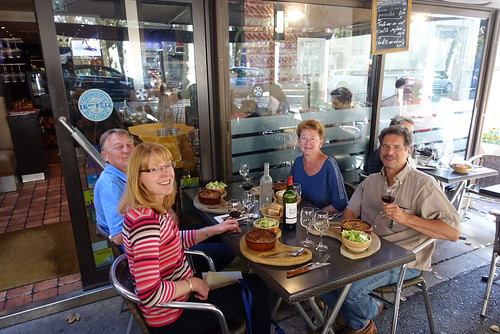


Interesting story and nice pictures, mvg., Jan
ReplyDelete